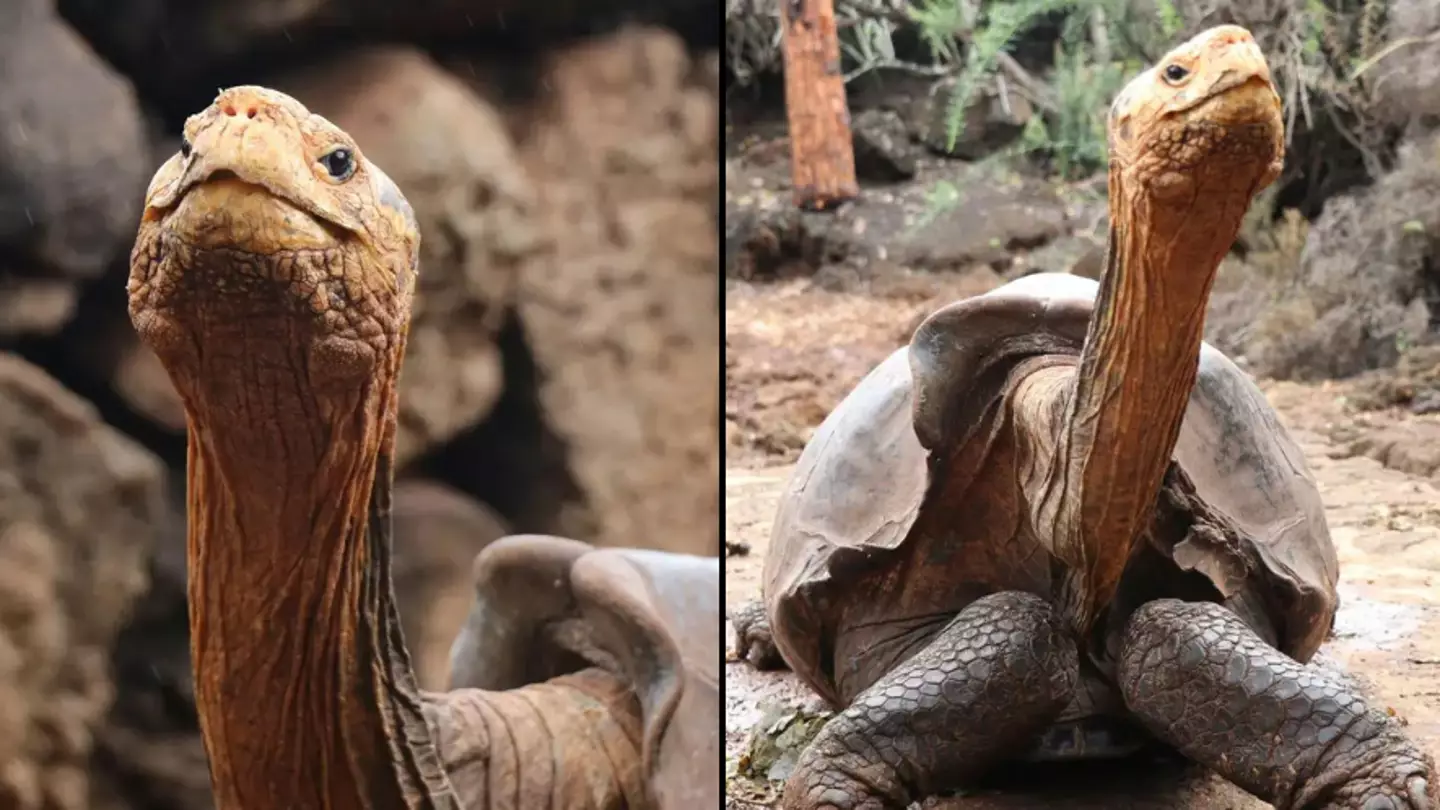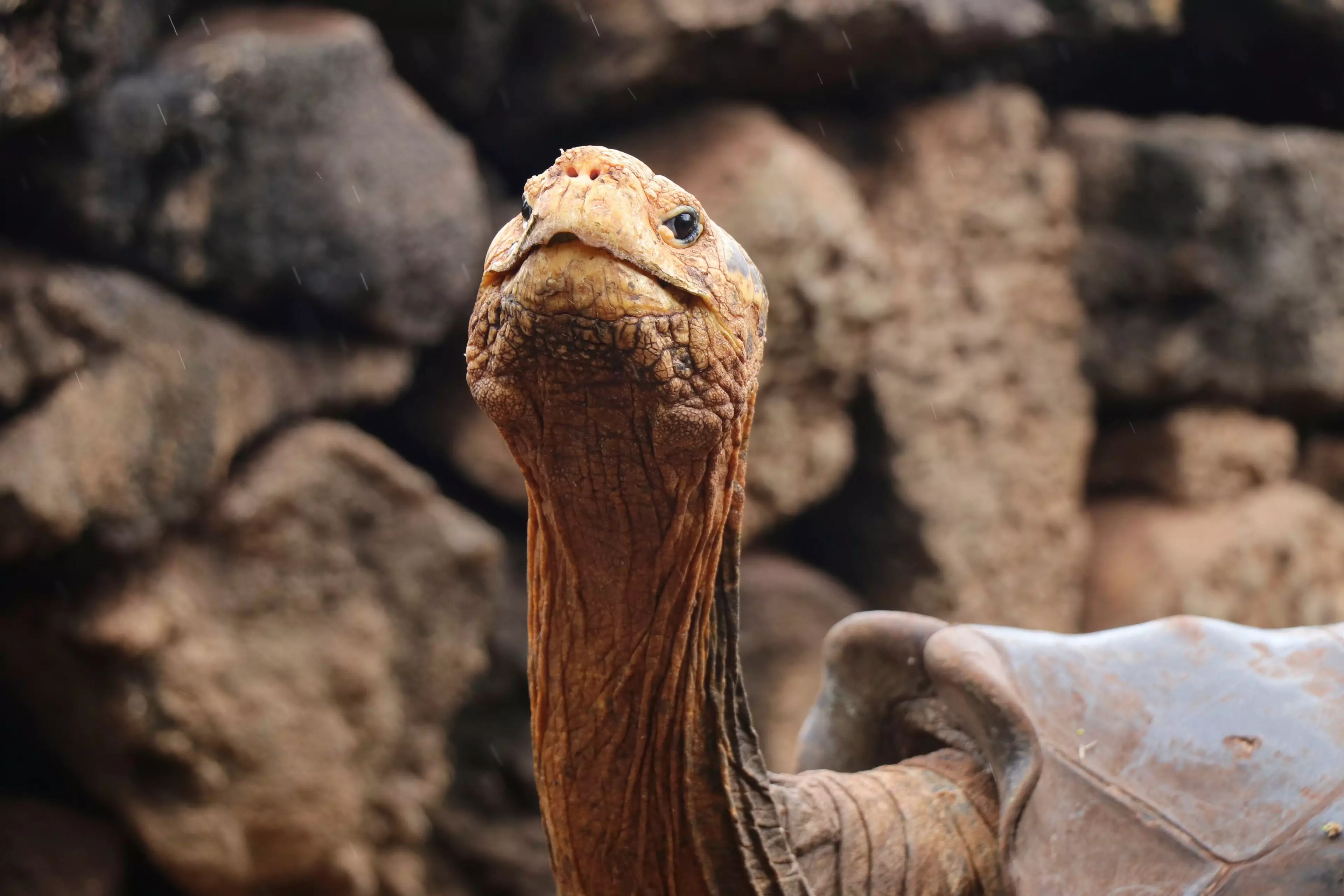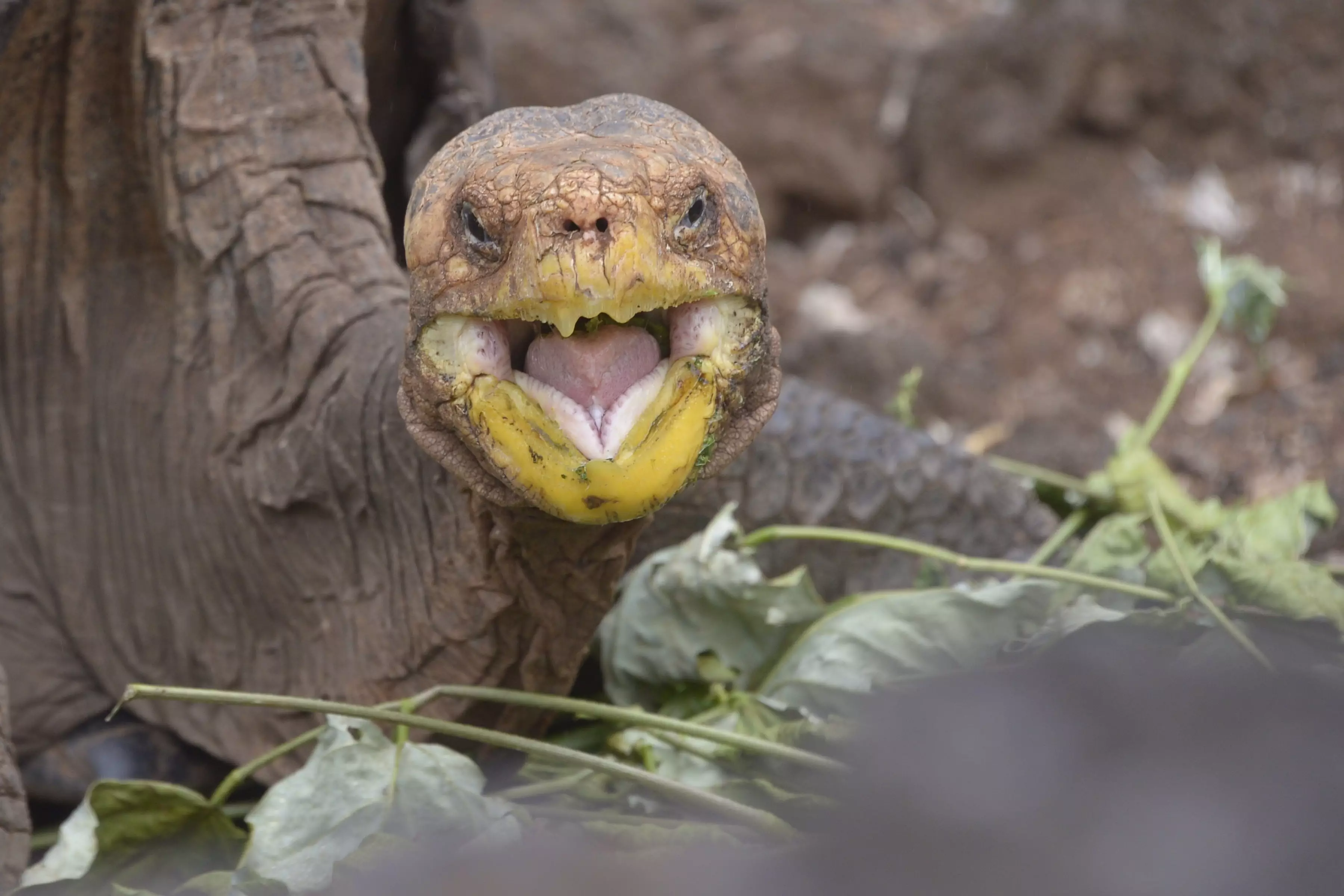
A sex-crazed tortoise who had fathered hundreds and has been praised for 'saving its species from extinction' was retired just a few years ago after siring more than 800 children.
Yes, it was a tough job, but some tortoise had to do it.
In this case, that tortoise was a brave soldier called Diego.
Diego the Galápagos tortoise was retired from his duties at the Galápagos national park's breeding programme on Santa Cruz island, with Ecuador's environment minister Paulo Proaño Andrade describing his retirement as the 'end of an era'.
Advert
At the time, he said: "We are closing an important chapter."

Diego was breeding in captivity to save the species from extinction for decades, but was sent on June 15 2020 to live out the rest of his days in his native home, the uninhabited island of Española, along with 14 other male tortoises.
Park rangers said that Diego fathered at least 40 percent of the 2,000 tortoises that live there, thanks to his high libido.
That's a lot of baby tortoises - Christmas must have been a nightmare in Diego's house.
Advert
Now aged around 102 or 103, he's still alive and weighs in at around 175 pounds (80kg).
Diego has been hailed for saving his species, with good reason.
Jorge Carrion, the park's director, told AFP news agency: "He's contributed a large percentage to the lineage that we are returning to Española.
"There's a feeling of happiness to have the possibility of returning that tortoise to his natural state."
In order to protect the delicate ecosystem of the small island, Diego and the other tortoises that he was released with were quarantined, to avoid transferring any plants from the other island.
Advert
The park service believes that Diego was taken from the Galápagos around 80 years ago by a scientific expedition.
He was then taken to San Diego Zoo in California before being moved to Santa Cruz island about 50 years ago. It was there that he was placed on a breeding program with 15 other tortoises.

When they were first taken, there were only two males and 12 females of Diego's species - Chelonoidis hoodensis or the Hood Island giant tortoise - in their natural habitat.
Describing Galápagos tortoises, National Geographic writes: "It is possible, though perhaps unlikely, that among the remaining giant tortoises of the Galápagos Islands, there exists an old-timer that was a hatchling at the time of Charles Darwin's famous visit in 1835.
Advert
"Giant tortoises are the longest-lived of all vertebrates, averaging over 100 years. The oldest on record lived to be 152."
The indigenous species of animals that were first found on the Galápagos, including iguanas and tortoises, are said to have played a key role in the development of Charles Darwin's Theory of Evolution.
Topics: World News, Animals, Weird